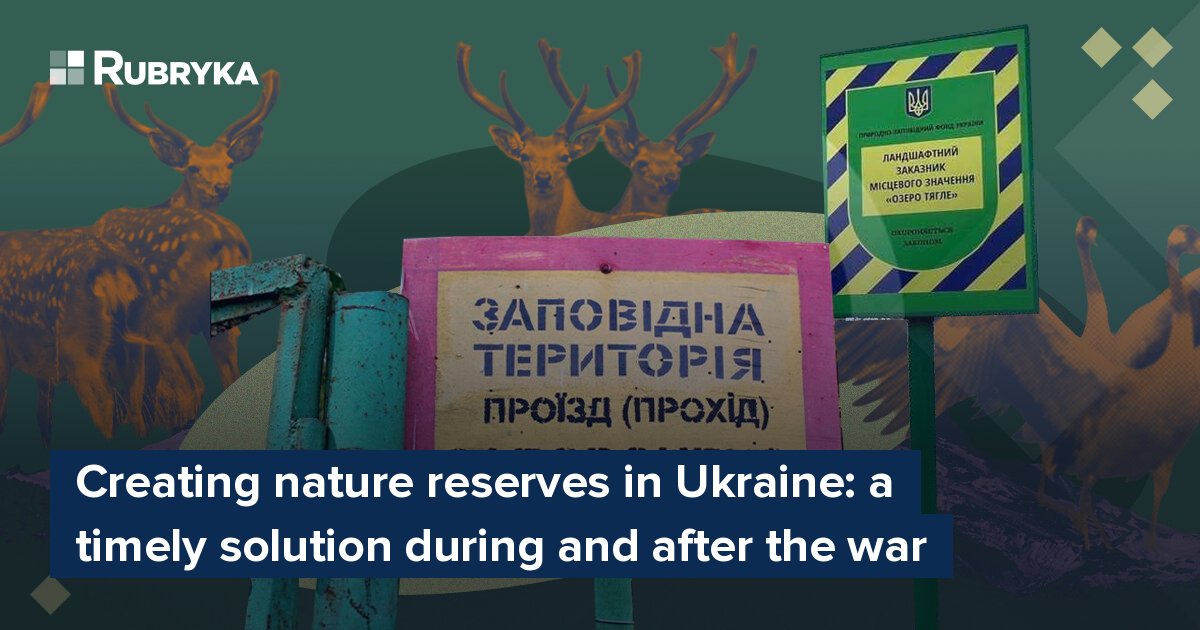
What is the problem?
More than one million hectares of nature conservation lands in Ukraine have been affected by the war
As of February 24, 2022, approximately 812 sites of the nature reserve fund (NRF) with an area of almost one million hectares were in the zone of active hostilities or under occupation. Among them are the biosphere reserves of Askania-Nova, the Black Sea, the Ukrainian Steppe, the Luhansk natural reserves, and many others.
Part of the territory was liberated, but the losses remained. For example, about 24,000 hectares of forests were destroyed within the Chornobyl Reserve alone. Holy Mountains National Nature Park in the Donetsk region has been destroyed by 80%. Ivory Coast of Sviatoslav National Nature Park, where more than 6,000 hectares of territory burned, Lower Dnipro National Nature Park, which went completely underwater after Russia destroyed the Kakhovka hydroelectric power plant, and many others were badly affected by the fires and shelling.
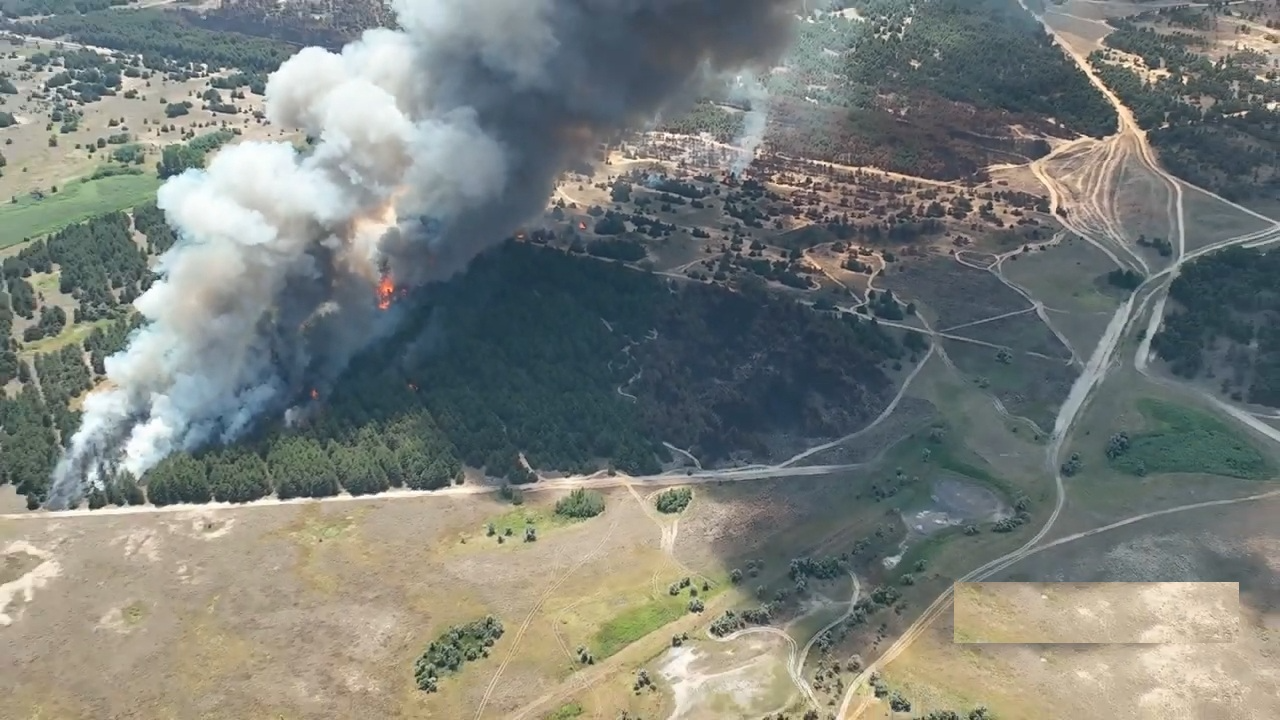
A fire on the territory of the Ivory Coast of Sviatoslav National Nature Park. Aerial photo courtesy of the park
The nature conservation status has not disappeared, but the number of untouched nature under protection has significantly decreased. At the same time, not only hostilities lead to the destruction of nature — a significant portion of the damage to natural territories is due to economic activities, such as pollution of water bodies with agrochemicals, plowing of fields, illegal logging — this list goes on and on.
What is the solution?
Ukraine has legislative prerequisites and the need to create nature reserve fund sites
According to Oleksii Vasyliuk, a biologist and the head of the Ukrainian Nature Conservation Group, the new sites of the nature reserve fund will significantly change the conditions for the existence of biodiversity for the better. Such territories can become worthy compensation for the loss of wildlife during the war.
The modern basis of European sustainable development is the restoration of natural ecosystems where they did not exist, not just saving the last remaining ones. In recent years, European states have increasingly been making bold and visionary decisions to stop global climate change and guarantee a reliable future for the entire continent.
In May 2020, the European Commission presented perhaps the most ambitious environmental document in the history of Europe — the "EU Biodiversity Strategy for 2030: Bringing nature back into our lives." The strategy contains specific commitments and actions to be implemented in the EU by 2030. Among the most ambitious goals are:
- 30% of land and 30% of seawater should become protected areas.
- 10% of agricultural land should be removed from cultivation and returned to natural ecosystems.
- The use of pesticides should be reduced by 50%.
- 25 thousand kilometers of rivers need to be restored to a free-flowing state.
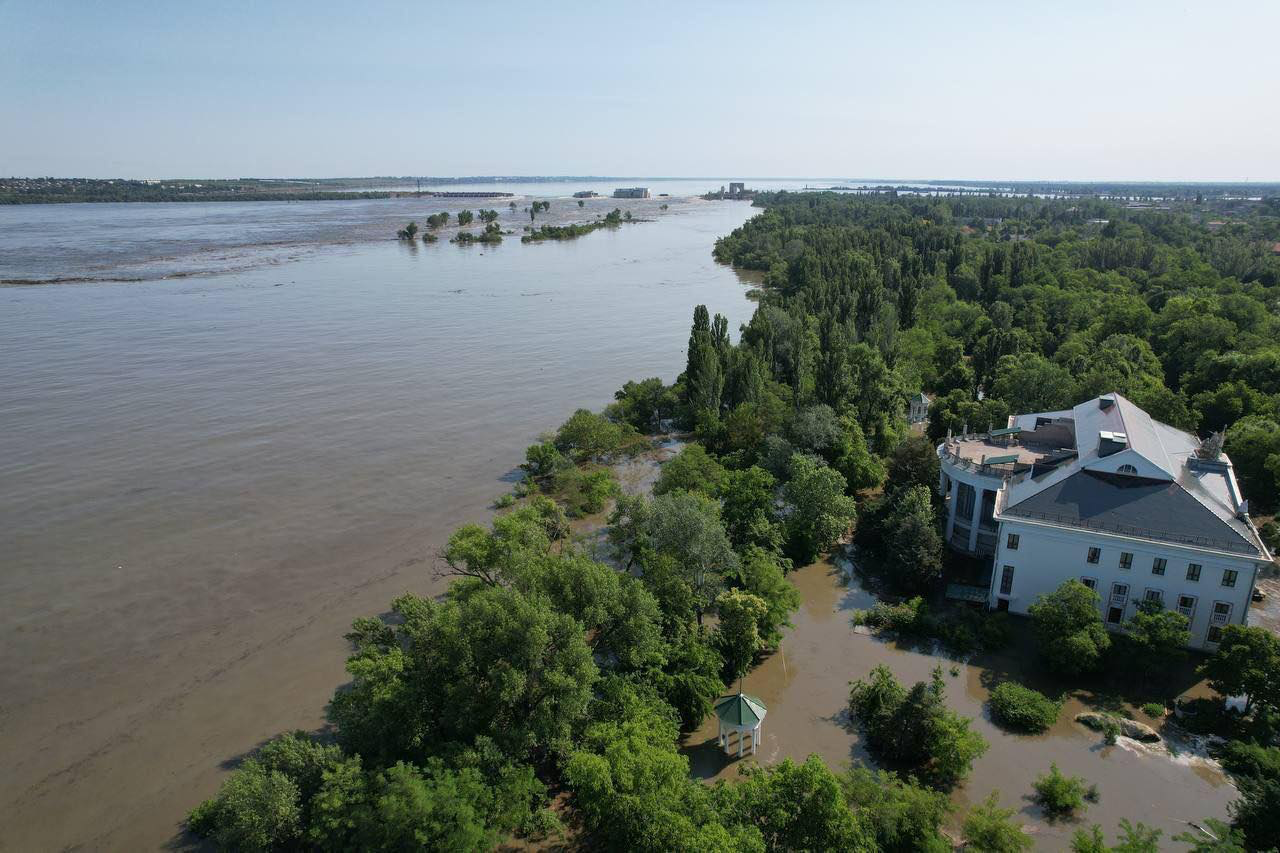
Lower Dnipro National Nature Park after the explosion of Kakhovka HPP. Photo from the Facebook page of the park
Ukraine cannot fulfill, the 30% norm contained in the Biodiversity Strategy, which European partners understand. Instead, Ukraine has other obligations under the Association Agreement with the European Union signed in 2014. The association agreement became the basis for the State Strategy for Sustainable Development, stipulating that by 2030, Ukraine should reserve 15% of the country's total area. Today, Ukraine is less than halfway to meeting its goal.
Will it definitely work?
The pace of reserving territories is extremely low. In two years of war, 0.1% of the territory of Ukraine was reserved
Currently, only 6.7% of the country's total area is in the nature reserve fund instead of the 15% required by 2030.
Although the process does not stop despite the war, the pace of creation of the territories of the nature reserve fund is much lower than what is needed to achieve the goal in time. In 2022, 0.085% of the entire territory of Ukraine was reserved, and in 2023 — 0.02%.
According to ecologists from the Ukrainian Nature Conservation Group, the rate of the destruction of nature by war significantly outweighs the rate of its preservation. For example, only the area of forests in the Chornobyl reserve that burned is almost twice the area reserved in 2023.
How is it supposed to work?
What ecologists propose: restoration of the Great Meadow and other solutions
If we take into account the territories that suffered after Russia's destruction of the Kakhovka HPP dam — we can talk about the restoration of the Velykyi Luh, or Great Meadow. Currently, Ukraine's Zaporizhzhia region already has a national park of the same name. Before the war, there were plans to expand it, including, among others, the territory of the eastern part of the water area of the Kakhovka reservoir.
The Great Meadow is one of Ukraine's most important natural and historical landscapes. The site was flooded more than 70 years ago when the Kakhovka Reservoir was created. This is where the Ukrainian Cossack State used to be, and many monuments of Zaporozhian Sich were submerged under the waters of the Kakhovka Reservoir. Before the flooding, there was a large number of rare species of animals and plants. For 70 years, the Great Meadow was lost to nature, science, and Ukrainian identity, but now is the time when it is still possible to influence the government's premature decision to build Kakhovka HPP-2, which may make it impossible to restore the Great Meadow.
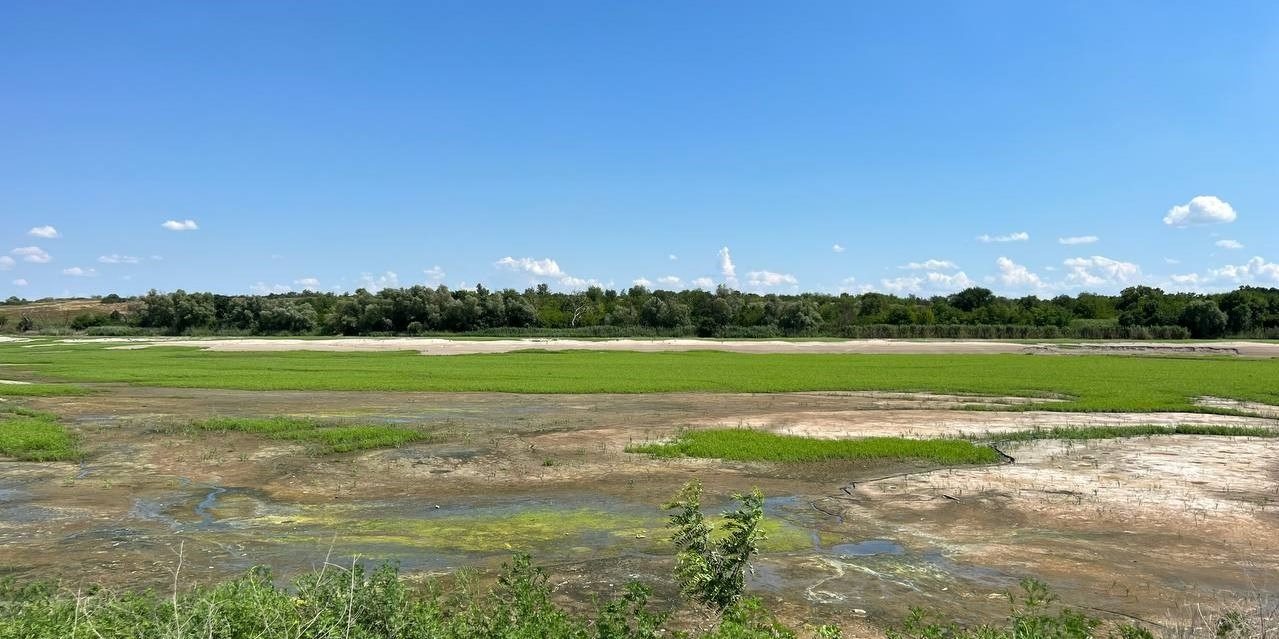
The Great Meadow. Photo from open sources
According to the ecologists of the UNCG, the idea of reviving the Great Meadow as a natural area is not only timely and ecologically justified but can also become a worthy compensation for the loss of wildlife during the war. However, the solution is not only to restore the Great Meadow.
At the request of the UNCG specialists, in 2023, multiple landscape reserves, parks, and botanical monuments were created in the Mykolaiv, Volyn, Cherkasy, and Kyiv regions.
The area of created protected areas is 4,688 hectares, which is 33% of the area of all newly created areas of the nature reserve fund during the past year. On the other hand, this is an relatively insignificant part of what could have been created.
Part of the territories pending reservation are currently occupied by Russian forces, but legally, this is not an obstacle to their preservation. For example, two years ago, the Ministry of Environment prepared decrees on the expansion of the national natural parks Dzharylhach in the Kherson region, Dvorichna in the Kharkiv region, Great Meadow in the Zaporizhzhia region, Vyzhnytsia in the Chernivtsi region, and even the national park Charming Harbor in the Crimea, which has been occupied since 2014. Some territories that are yet to be created are also awaiting designation as nature reserves.
There are also successful cases. For example, in November 2023, the Ministry of the Environment agreed to expand the Ivory Coast of Sviatoslav National Nature Park to the territory with the historical name of Olbia Hora, because of the Olbia settlement once located there. Even though most of the national park area is occupied, its territories were added to those located in the free part of Ukraine.
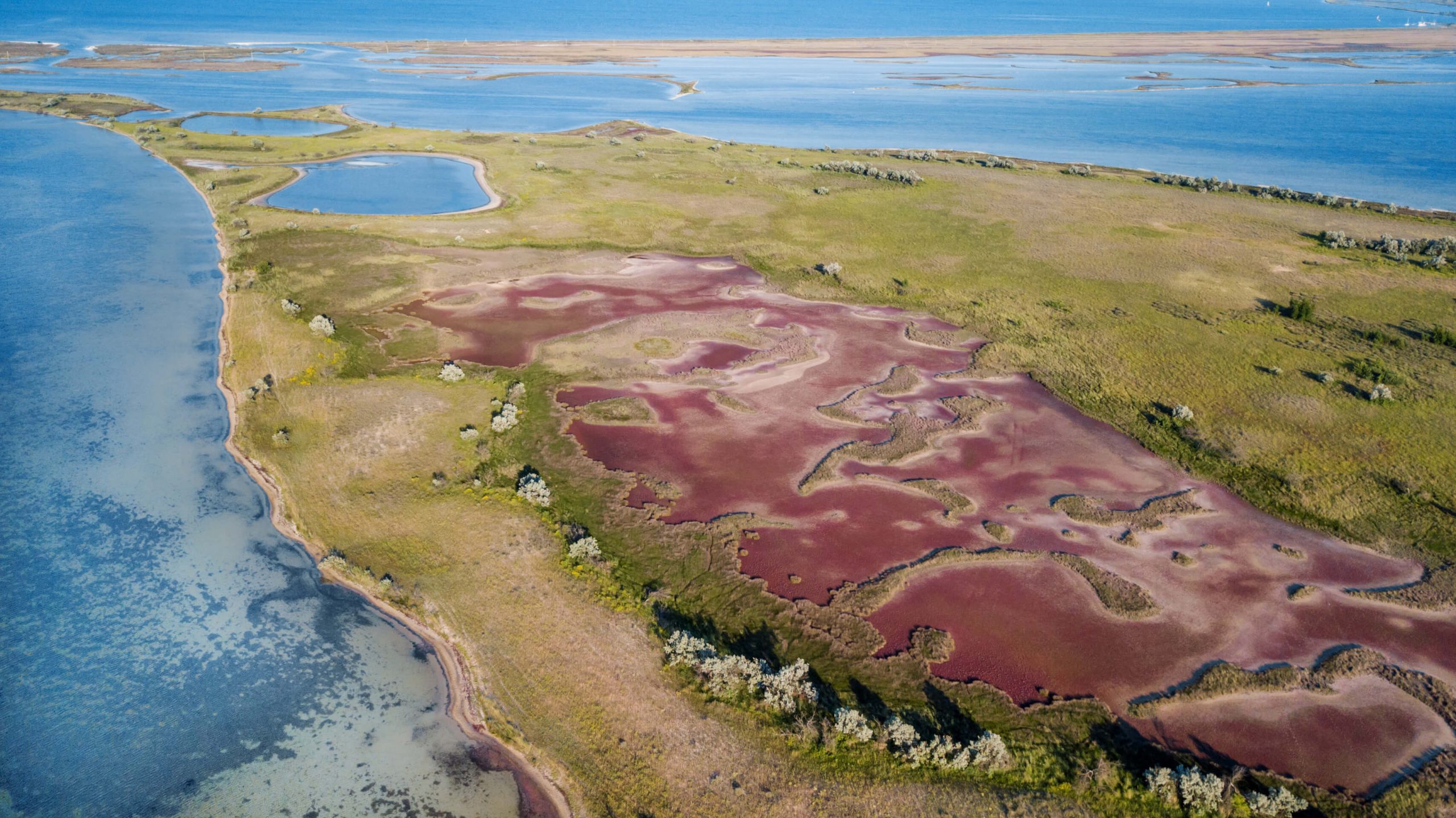
Ivory Coast of Sviatoslav National Nature Park. Photo: Victoria Rohovenko
How effective is it?
At the beginning of Ukraine's independence, there was a tendency to reserve territories only for show. For example, several settlements are included in the Carpathian National Nature Park. Viktor Skorobohatov, an expert on the protection of steppes and a member of the UNCG, cites other examples. For the past two years, he has followed Ukraine's land reservation statistics. When the sites of the NRF include arable land, settlements, or territories that have no value for protection – such as artificial forest plantations, where nothing else grows beside it – such territories have no value. There are actually many such examples. For example, Podilski Tovtry National Nature Park is Ukraine's largest national natural park, which includes a third of the Khmelnytskyi region. It includes dozens of settlements, which it is clearly ineffective. During Soviet times, many artificial forest plantations were reserved in the Luhansk region instead of the steppes typical for these territories.
Skorobohatov adds that such nature reserves were once created to increase the statistics of land reservation, but not only. Now, from time to time, nature reserve sites are created on the territory of the parks to create an obstacle to the development of the territories. In recent years, such a trend has disappeared. Unfortunately, such a phenomenon as 'reservation for the sake of reservation' to increase the percentage of reserved lands and get closer to the necessary norms is not happening at the moment. The creation of any nature reserve is a legally defined procedure and cannot be faked. There are many petitions for establishing new reserve facilities, all of which are pending establishment or announcement.
According to Skorobohatov, the main obstacle to the reservation is the state enterprise Forests of Ukraine, which must necessarily give its consent. However, the body resists. According to Skorobohatov, the created reserve will prevent the enterprise from carrying out economic activity, such as logging.
"The reluctance of foresters to agree to the creation of the nature reserve seems incompatible with the state's plans to reserve 15% of the territories of Ukraine," says Skorobohatov.
Environmentalists have already found a way out of this situation, negotiating with the enterprise for each individual object. A compromise may be the cancellation of some already created territories of the nature reserve, or lowering their rank to decrease the number of restrictions on economic activity. Thus, the Forests of Ukraine will be able to use new territories that are no longer of particular value for preserving biodiversity, but exchange them for more valuable ones currently in use.
Newsletter
Digest of the most interesting news: just about the main thing



